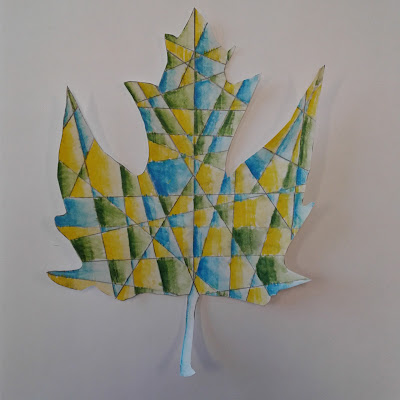This is a project my mixed Grade 4- 6 class did for the run-up to Canada Day (July 1st) celebrations. They created these lovely Arctic watercolour landscapes incorporating an inuksuk. This lesson was inspired by the illustrations in the beautiful book "The Inuksuk Book" by Canadian author/illustrator Mary Wallace. The book is a fantastic source on the history of inuksuks. Many of my students are familiar with them as many hike in the nearby mountains and alot of travelers make mini inuksuks along the pathways for fun.
An inuksuk is a stone structure that can communicate knowledge essential for survival to an Arctic traveler. Inuksuit are found throughout the Arctic areas of Alaska, Arctic Canada, and Greenland.
Students started by drawing a landscape- I encouraged them to include a foreground, middle and background. They created a freehand border and included a small space at the bottom where they would later write their name in Inuktitut. The book offers a useful 'alphabet' of sort st the back of the book so the kids could write their own name. Once drawn, they outlined these in either black coloured pencil or Sharpie. They they painted them using watercolours: I gave them the choice of using the Prang watercolours in a pan, liquid ones or watercolour pencils. Some students also sprinkled salt onto the wet paintings to add some textural effects.
Grade 4 - 6 results




























































